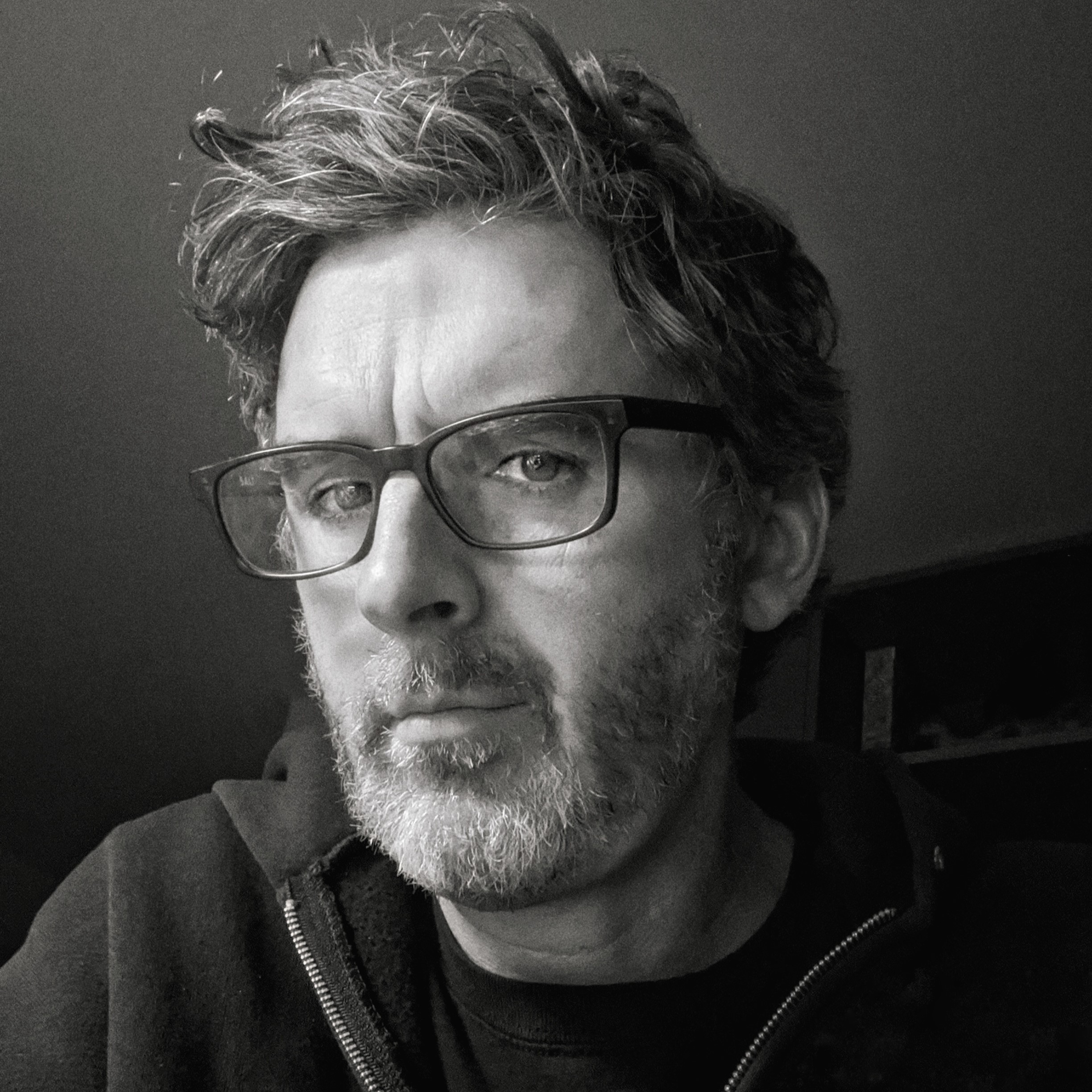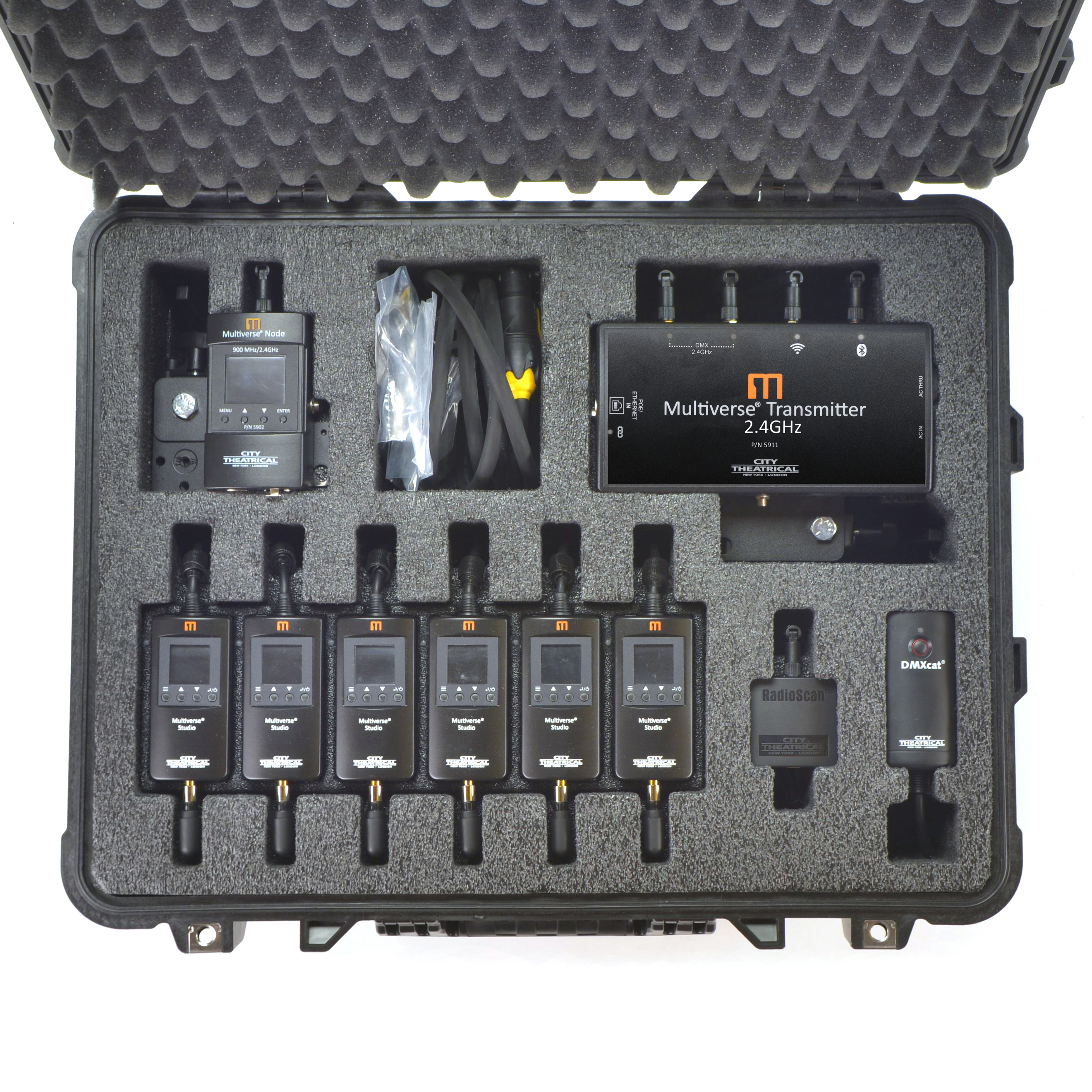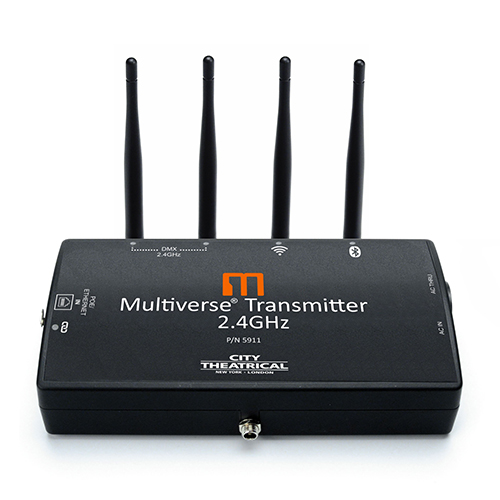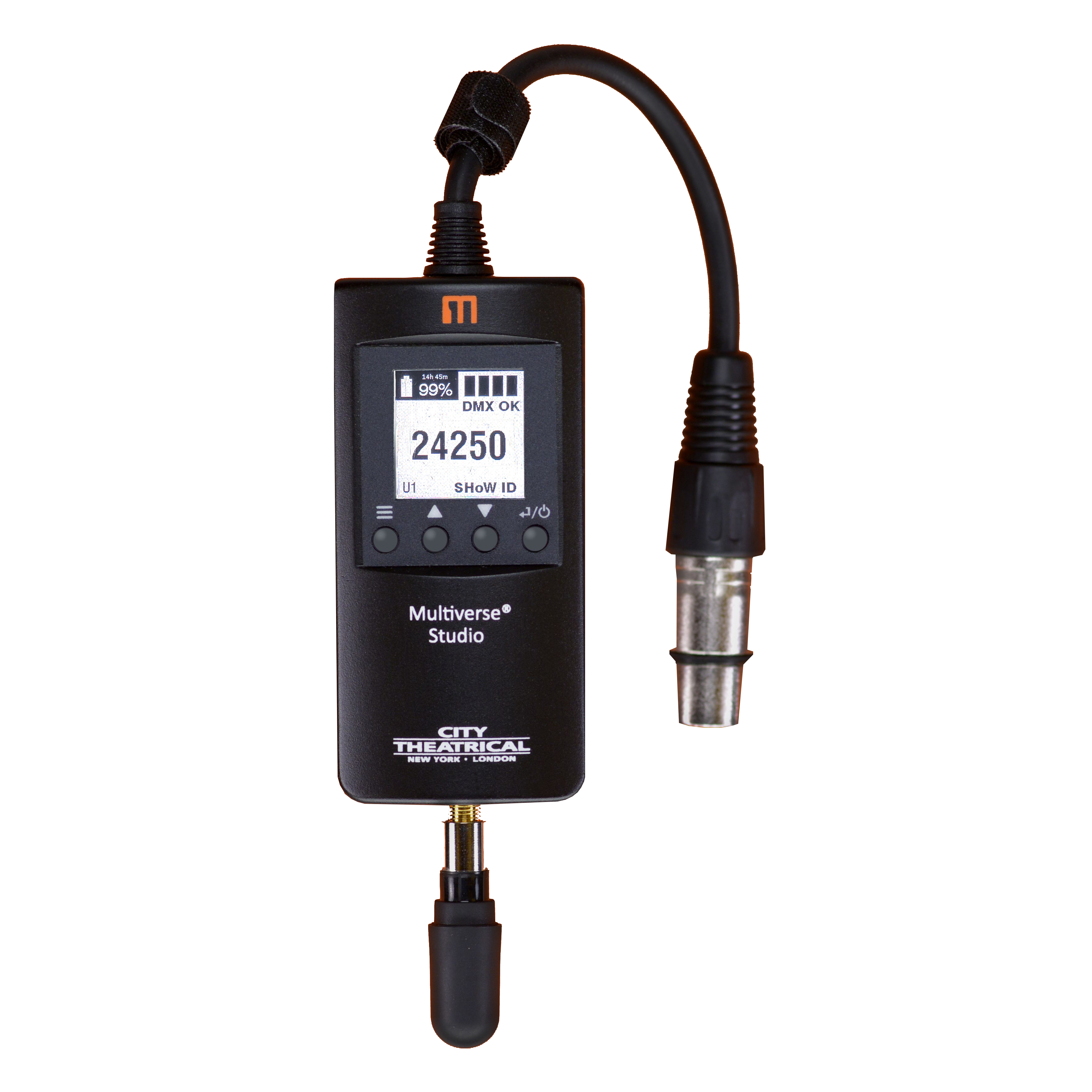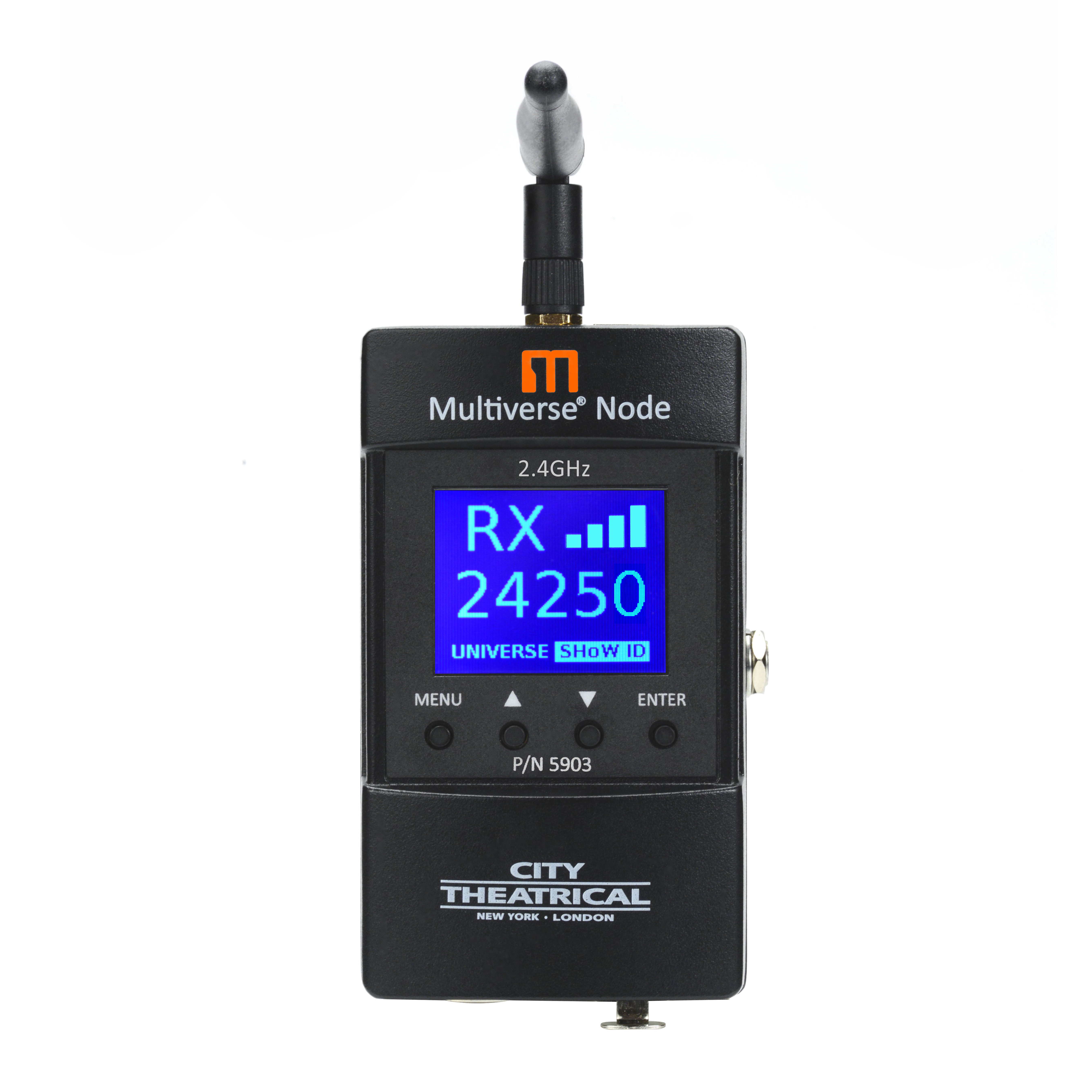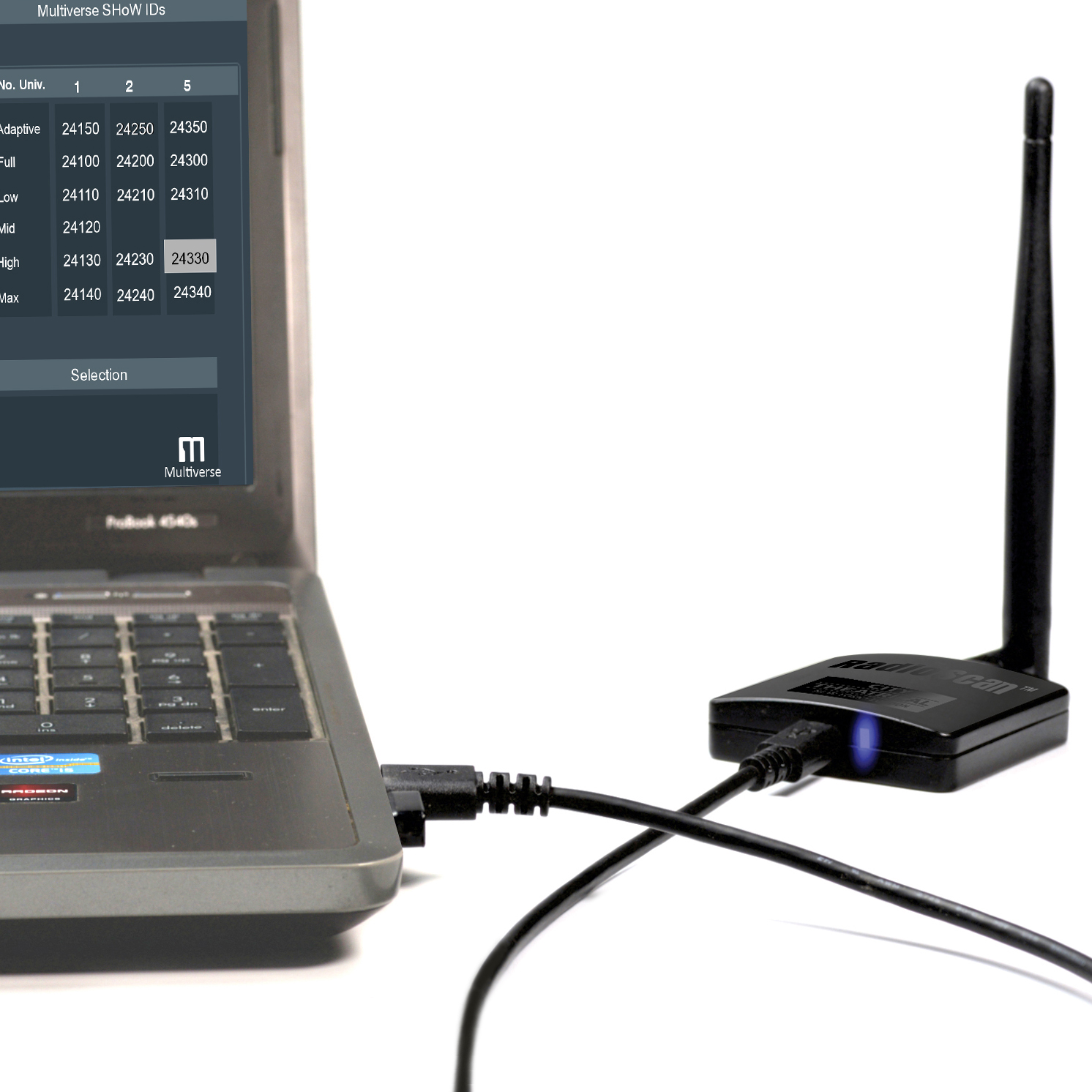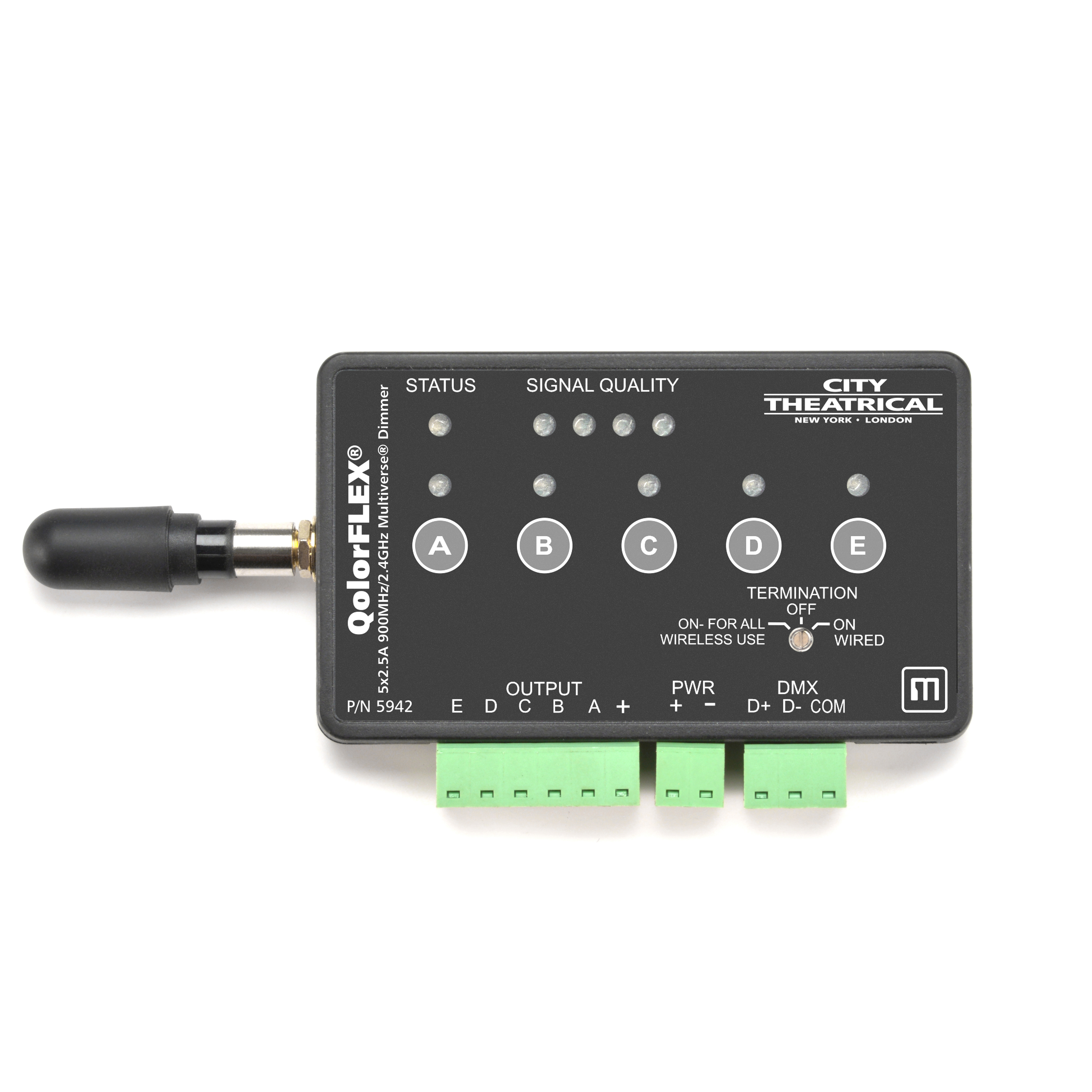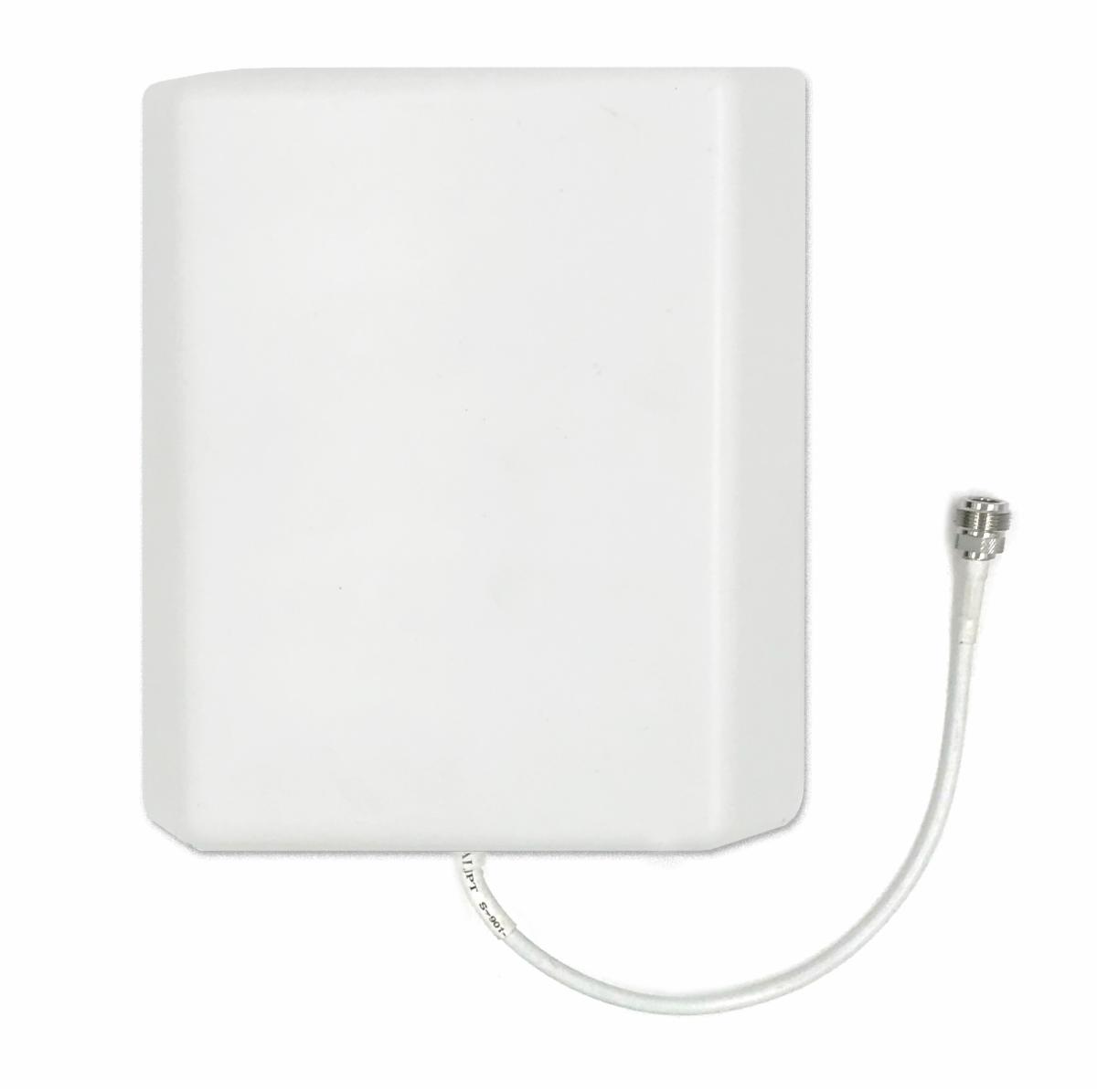Leave the World Behind
Learn how Multiverse Studio Kit, QolorFLEX Multiverse Wireless Dimming Control and RadioScan Spectrum Analyzer were used in the filming of Netflix Film Leave the World Behind in this City Theatrical case study.
City Theatrical's Multiverse® Wireless DMX/RDM for Netflix Film Leave the World Behind
Chief Lighting Technician Steven Ramsey and the lighting team for the Netflix film Leave the World Behind were looking for a robust and reliable wireless DMX solution for shooting this film on various locations in Long Island and Upstate New York. They found that the Multiverse Studio Kit provided the broadcast planning tools, dual band technology, long battery life, and contactless charging they were looking for.
Discover more about their experience with the Multiverse Studio Kit and other wireless DMX/RDM products, including QolorFLEX Multiverse Dimmers, and RadioScan Spectrum Analyzer by City Theatrical in this wireless DMX case study Q&A with Steven Ramsey on Netflix's Leave the World Behind film below.
CASE STUDY:
Multiverse® 900MHz Wireless DMX/RDM for
Netflix Film Leave the World Behind.

Leave the World Behind on Netflix
Learn more about the filmFILM SYNOPSIS
In this apocalyptic thriller from award-winning writer and director Sam Esmail (Mr. Robot), Amanda (Academy Award winner Julia Roberts) and her husband Clay (Academy Award nominee Ethan Hawke), rent a luxurious home for the weekend with their kids, Archie (Charlie Evans) and Rose (Farrah Mackenzie). Their vacation is soon upended when two strangers — G.H. (Academy Award winner Mahershala Ali) and his daughter Ruth (Myha’la) — arrive in the night, bearing news of a mysterious cyberattack and seeking refuge in the house they claim is theirs. The two families reckon with a looming disaster that grows more terrifying by the minute, forcing everyone to come to terms with their places in a collapsing world. Based on the National Book Award-nominated novel by Rumaan Alam, LEAVE THE WORLD BEHIND is produced by Esmail Corp, Red Om Films, and executive produced by Higher Ground Productions.
See the trailer on YouTube via Netflix
THE CASE STUDY Q&A:
City Theatrical (CT): What were some of the goals you had when it came to using wireless DMX/RDM technology for Netflix film Leave the World Behind?
Steven Ramsey (SR): We wanted to use the 900MHz band to avoid the 2.4GHz traffic. This is of particular concern when we are using a wirelessly controlled light on or near the camera. We have had frequent issues in the past with communication conflicts/interruptions using other 2.4GHz systems, particularly with the wireless 2.4GHz follow-focus system that the camera department was using.
One of the challenges we had on our job prior to Leave the World Behind was resolving wireless communication conflicts on the 2.4GHz bandwidth with other departments. It always felt like we were either asked to compromise our workflow or asking another department to compromise their workflow to get the shot. Being able to step out of the 2.4MHz conversation by using the Multiverse 900MHz wireless DMX/RDM technology was a very compelling idea.
We were also looking to test Multiverse in combination with our existing Ratpac AKS+ and Satellite kit for full compatibility with all available lighting units (such as Asteras).

QolorFLEX 5x2.5A Multiverse Dimmer on the camera on set at Leave the World Behind. Photo Courtesy of Steven Ramsey / Netflix.
CT: Tell us about the challenges that were specific to wireless DMX on this project.
SR: Director Sam Esmail and Cinematographer Tod Campbell designed a lot of intricate camera moves throughout the production. Often the camera would start wide, then swing around the actors and end up in a close-up, or vice versa. We knew going in that we would need to find ways to hide our lighting from the moving camera while also being prepared to ride intensity levels and cross-fade various lights on the fly.
One of the tools Tod asked to have was a small on-camera light that we could introduce in those moments when the moving camera would land within a foot or two of an actor’s face. This light would have to match a variety of different lighting sources, so we opted for a small five-color LED ribbon-based unit. In the past, we have had issues with 2.4GHz wireless transmission systems due to the interference between our receiver and the 2.4GHz wireless follow-focus units, as well as the transmission obstacles around the camera in a crowded set. We were very relieved to be able to have the Multiverse 900MHz capability to communicate with the light via the QolorFLEX 5x2.5A Multiverse Dimmer, 900MHz/2.4GHz (P/N 5942).
With 1st AC Trevor Loomis’ help, we were able to attach the small receiver to the camera and power the lighting unit and the dimmer off of the camera battery which kept the whole system as unobtrusive as possible. The five-channel control of the dimmer was a perfect tool to remotely set each of the RGBWW values to match the color in a given lighting situation.
The dimmer response time was excellent and allowed us to make invisible, on-the-fly incremental changes to the lighting levels from our remote fader wing next to the DIT monitor.
“In the past, we have had issues with 2.4GHz wireless transmission systems due to the interference between our receiver and the 2.4GHz wireless follow-focus units, as well as the transmission obstacles around the camera in a crowded set. We were very relieved to be able to have the Multiverse 900MHz capability to communicate with the light via the QolorFLEX 5x2.5A Multiverse Dimmer, 900MHz/2.4GHz.”
- Steven Ramsey, Chief Lighting Technician, Netflix Film Leave the World Behind
CT: Were there any wireless DMX challenges having to do with the location of shooting?
SR: Long hallways are always an issue for wireless communication - a cluster of bodies, and multiple signals reflecting and creating interference. Using the Multiverse wireless DMX/RDM system to both reduce our wireless transmission and move our lighting communication to the 900MHz bandwidth was helpful for all departments. In the US, we are fortunate to have access to the 900MHz part of the broadcast spectrum. Why not take advantage of it? As we’ve found, it can be a lifesaver when our department or other departments might be struggling for a clear 2.4GHz signal. At this point, I would feel irresponsible not being able to offer a 900MHz option.
CT: Were there any other important tools used to accomplish your wireless DMX goals?
SR: We also used the Multiverse Panel Antenna, 7dBi/8dBi, 900MHz/2.4GHz (P/N 5981) for our exterior work where we sometimes transmitted signals from hundreds of feet away. Because we are often placing our transmitter on the periphery of the set, being able to use the panel antenna to focus the transmission on the middle of the set is a no-brainer.
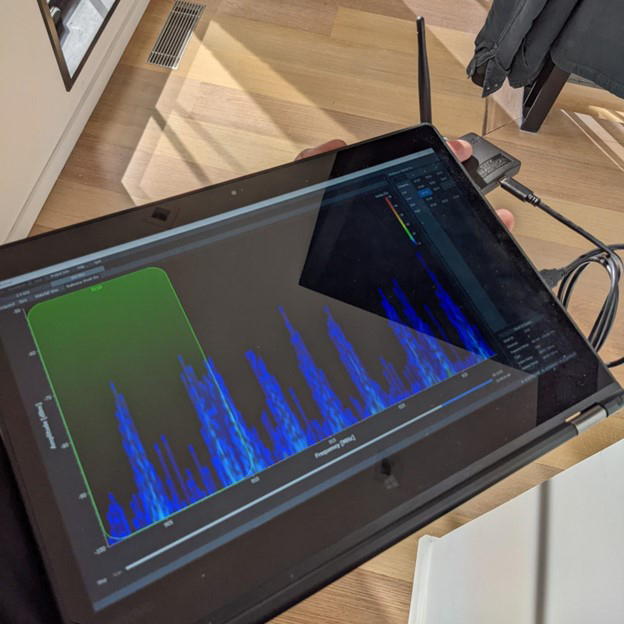
RadioScan on set at Leave the World Behind. Photo Courtesy of Steven Ramsey / Netflix.
“The RadioScan Spectrum Analyzer is a great public relations tool between departments. It not only allows the electric department to strategize its own broadcast options but also allows us the opportunity to represent the wireless broadcast environmental challenges that all departments are facing.”
- Steven Ramsey, Chief Lighting Technician, Netflix Film Leave the World Behind
CT: Did you use any tools to plan your wireless DMX broadcast?
SR: The RadioScan Spectrum Analyzer is a great public relations tool between departments. It not only allows the electric department to strategize its own broadcast options but also allows us the opportunity to represent the wireless broadcast environmental challenges that all departments are facing. The RadioScan software is very easy to use and integrates well with the Multiverse wireless DMX system when selecting the appropriate SHoW IDs.
CT: How did your goals of using the 900MHZ band to avoid traffic work out?
SR: I appreciate the broadcasting benefits of the Multiverse to lessen the overall wireless traffic. The fact that the Multiverse Transmitter only transmits when there is a level change is a benefit when a crowded set is already getting bombarded with random wireless traffic. The 900MHz band is a blessing to have in those situations where other departments are struggling to get clear signal transmissions on the 2.4GHz band.
It’s always good when another department asks if there is anything you can do to help them with a problem and you can say: yes. After all, we’re a team and we’re constantly trading favors and lending a hand to help every department reach its peak performance.
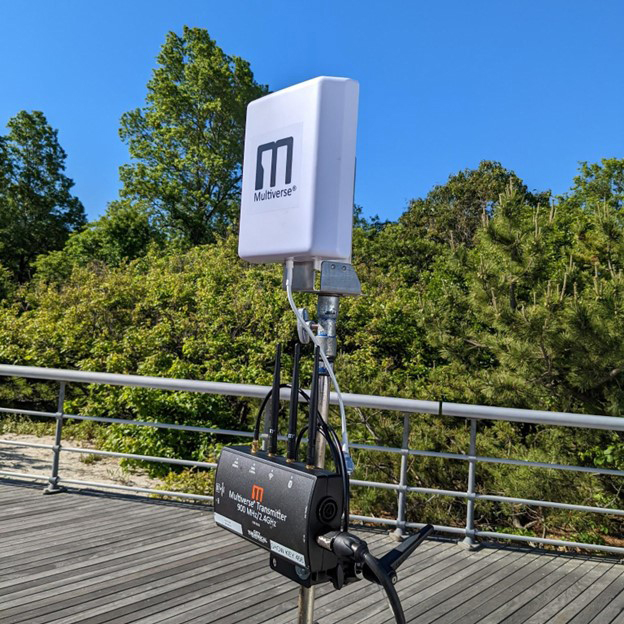
Multiverse Transmitter and a long range Panel Antenna on set at Leave the World Behind. Photo Courtesy of Steven Ramsey / Netflix.
“In the US, we are fortunate to have access to the 900MHz part of the broadcast spectrum. Why not take advantage of it? As we’ve found, it can be a lifesaver when our department or other departments might be struggling for a clear 2.4GHz signal.”
- Steven Ramsey, Chief Lighting Technician, Netflix Film Leave the World Behind
CT: Why was Multiverse wireless DMX/RDM the right solution for this project?
SR: There were several reasons why Multiverse was the right solution for this project, including:
- The Multiverse Studio Kit has everything in a compact rolling pelican case.
- The Multiverse Transmitter is compact, lightweight, and quick to deploy.
- The Multiverse Studio Receivers are automatically linked to the Multiverse Transmitter. There is no need to manually send a signal to link a particular receiver. That’s a time saver!
- We love the wireless charging docks for the Multiverse Transmitters. One less cable to have to connect, troubleshoot, and replace.
- We also love that the Multiverse Studio Receivers have a customizable display that has all the settings clearly listed.
- We carry multiple DMXcats for troubleshooting data issues already, so the DMXcat app is a familiar interface when making any adjustments to the transmitter settings. Once you’re done, then there are no buttons on the unit that will get bumped or changed by mistake.
- There are many parameters to adjust on both the transmitting side and receiving side you can usually tweak such as the output power, SHoW ID, bandwidth, etc. to suit any given situation.
- We had a good experience using ETC Source 4 Series 3 Lustr fixtures with built-in Multiverse Studio Receivers.
CT: Overall, what was it like to work with Multiverse wireless DMX?
SR: We appreciate having a dual system to have maximum compatibility with all manufacturers’ built-in wireless technology. I wouldn’t want to be without either option because certain situations dictate a different tool to be the most effective. LumenRadio and Multiverse are complimentary tools that together cover the range of day-to-day wireless challenges that we face. For us, the choice is both systems. And we had zero conflicts between the two systems running alongside one another simultaneously.
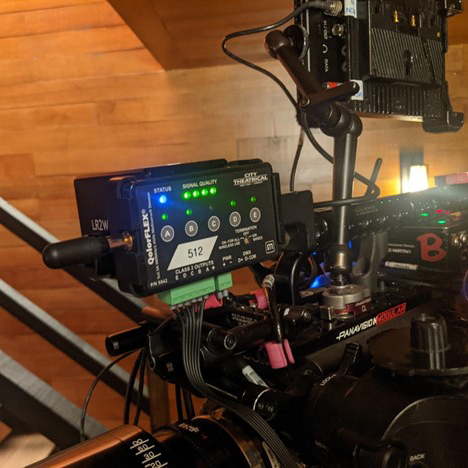
QolorFLEX 5x2.5A Multiverse Dimmers on the set of Leave the World Behind. Photo Courtesy of Steven Ramsey / Netflix.
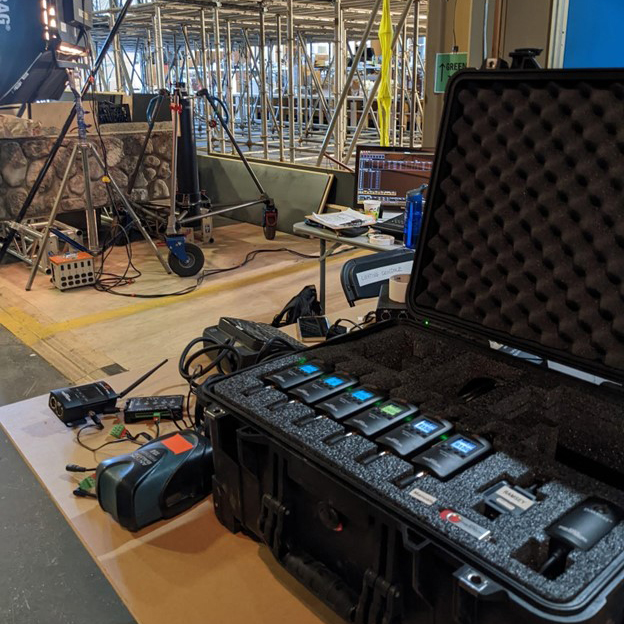
Multiverse Studio Kit on the set of Leave the World Behind. Photo Courtesy of Steven Ramsey / Netflix.
CITY THEATRICAL PRODUCTS USED
